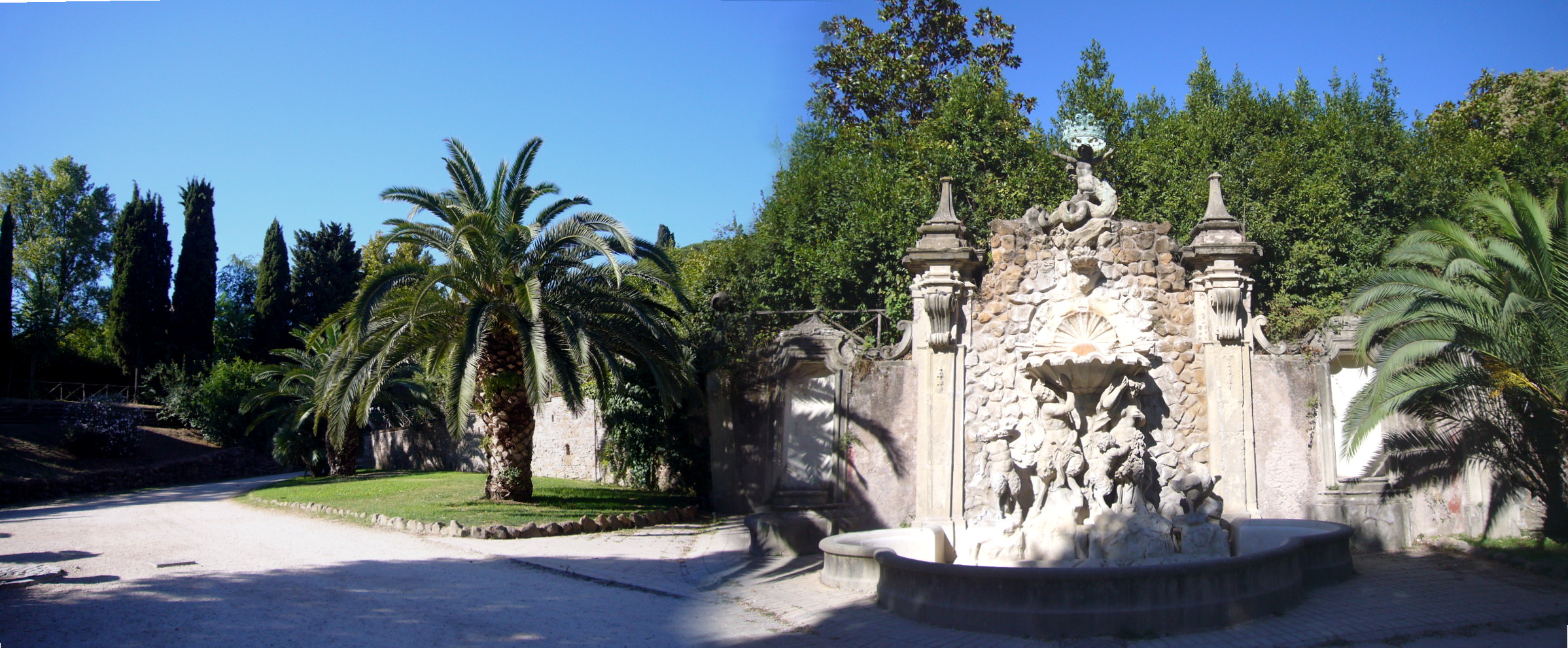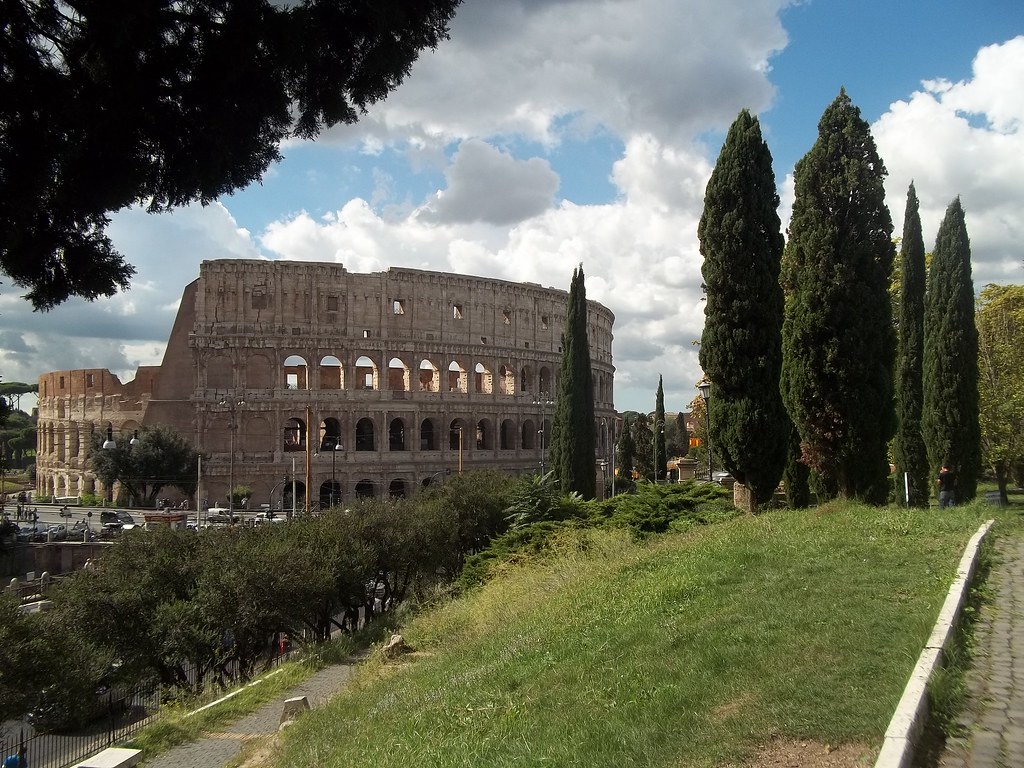It may come as a surprise to learn that Rome is considered one of the “greenest” cities in Europe, thanks to the presence of many expansive public parks. On any given summer day (or Sunday throughout the year), the a visit to one of Rome’s parks is a common idea among Romans and tourists alike.
In this guide, we detail some of the characteristics and the what-you-should-know for visiting any of these parks. We’ve also included a Google Map with all of the parks to help you find the closest park to your ROMAC vacation rental!

Villa Ada trail
Villa Ada
Located north of Villa Borghese, Villa Ada housed the Italian royal House of Savoy who owned the home and grounds until 1878 when it was turned over to Count Telffner of Switzerland (who named the villa Ada after his wife). The royals regained control over the villa in 1904 and kept the name. It remained the royal residence until the monarchy was abolished by referendum in 1946. Today the royal residence is home to the Egyptian Embassy to Italy.
How to Get There
Entrances to Villa Ada are on Via Salaria (3 entrances), Via di Ponte Salario, Via de Monte Antenne & Via Panama. The following bus lines service entrances to the park: 319, 57, 235, 135, 342, 391, 168, 56.
Hours
The park opens daily at 7am and closes at dusk (unless there are events inside the park taking place)

A small lake with a neoclassical temple are situated in the north part of the park. Paddle boats and canoes are available for rent to enjoy a lazy afternoon on the water.
Villa Borghese
Located just north of the historic center of Rome, the Villa Borghese gardens were purchased by the City of Rome and opened to the public in 1903. The history of the villa dates back to 1605 when Cardinal Scipione, nephew to Pope Paul V, began turning the family’s vineyards into the city’s largest curated gardens since ancient Rome.
How to Get There
Villa Borghese is easily reached by foot from the top of the Spanish Steps (head left, passed Villa Medici) or through the gate at Piazza del Popolo. The Metro A Stop “Spagna” also has a direct access via a tunnel in the metro stop. Follow the signs for Villa Borghese to the exit at Porta Pinciana, which is also the end of Via Veneto.
Hours
While the park is open all day and night there is no formal security, so it’s advised not to visit the park after dark.

Constructed in 1647 the casino is the symbol for the Villa Pamphili park. It’s English-style gardens were completed in 1650.
Villa Pamphili
Located in the northwest edge of the city, Villa Doria Pamphili is the largest park in Rome and a beautiful 17th century villa. The original villa was purchased and expanded by the Pamphili family who held great honor when Cardinal Giambattista Pamphili became Pope Innocent from 1644-1655. At the heart of the villa is a regal casino building fronted with English-style hedges in decorative patterns. The park was purchased from the Pamphili-Landi family and opened as a public park in 1971.
How to Get There
There are several entrances to the park: Via Vitellia, Via di Porta S. Pancrazio, Via Leone XIII. The best way to reach the park is by bus. Lines 31 and 982 service both the Vatican and Prati areas as well as Ostiense/Piramide and EUR. The regional trains from Trastevere and Piramide also service the stop “Quattro Venti” which is the nearest train stop to the park. From any urban stations, a regular metro ticket is valid for the trip to Quattro Venti.
Hours
The park observes the following hours:
- October – February: 7am – 6pm
- March – September: 7am – 8pm
- April – August: 7am – 9pm

Villa Sciarra
Villa Sciarra
Located on the east side of the historic center, Villa Sciarra is tucked among Trastevere, Gianicolo and Monteverde neighborhoods. The history of the villa can be traced back to Cardinal Barberini in 1653 who purchased much of the land in the area for a farm. In 1811 the Colonna di Sciara family purchased it and constructed the villa. The property passed through a few more hands before it was ultimately gifted to Benito Mussolini in 1932 with the intention that it be made a public park.
How to Get There
There are two entrances on Via Calendrelli which are just a short walk from Viale Trastevere.
Hours
The park observes the following hours:
- October – February: 7am – 6pm
- March – September: 7am – 8pm
- April – August: 7am – 9pm

The “Cascate del Laghetto dell’EUR” were restored and turned back on in 2017 after 56 years.
Laghetto dell’EUR
The laghetto dell’EUR is located in the southern neighborhood known as EUR, abbreviation of Esposizione Universale di Roma. The small artificial lake was inaugurated to celebrate the 1960s Summer Olympic Games which Rome hosted. There is a walking/running and bicycle path that runs around the entire lake. Along the southwestern edge, a row of Japanese cherry blossom trees bloom every spring. The trees were a gift to the city of Rome from Japan’s first Prime Minister during a visit in 1959.
How to Get There
The EUR neighborhood is easily accessible by the Metro B, with stops EUR Palasport and EUR Fermi both located along the long side of the lake. EUR Magliana is located near the Palazzo della Civiltà Italiana, also known as the “Square Colosseum” and now Fendi Headquarters.
Hours
Open 24 hours. Viale American which runs along the north edge of the lake is lined with late night restaurants, gelato shops and bars.

Parco degli Acquedotti was also featured in the film The Great Beauty for a scene that featured international performance artist, Marina Abramovic
Parco degli Acquedotti
Located in the southeast corner of the city just inside the GRA, the highway that surrounds the periphery of Rome, the Parco degli Acquedotti is remarkable for its substantial remnants of ancient Roman aquaduct structures. Ruins from various acquaduct systems remain, like Aqua Felix and Aqua Claudia which were among the complex systems of water distribution that brought fresh water from interior lakes to the city of Rome. The area became a public park in 1965 thanks to the efforts of local citizens who sought to secure civil protection for the ruins and ancient Roman heritage.
How to Get There
The park can be reached by Metro A from stops “Lucio Sestio” and “Giulio Agricola”.
Hours
Open 24 hours

The view of the Colosseum from nearby Parco del Colle Oppio
Parco del Colle Oppio
The Parco del Colle Oppio offers stunning views of the Colosseum since it is located just across the street. Beneath the park is just as interesting; much of the ruins of Nero’s Domus Aurea is located underground as well as the Baths of Trajan and the Baths of Titus. The area became a public garden in 1871 during new urban reorganization measures that came after Rome was declared the capital of Italy. During the early 20th century the park was given the look that remains today, such as the fountains and marble statues.
How to Get There
Parco del Colle Oppio is located on the hill adjacent the Colosseum (Metro B stop “Colosseo”). Main access is on Via Labicana, easily reached on foot.
Hours
Open 24 hours

Besides the beautiful view of Rome from the privileged vantage point, the Parco del Gianicolo hosts the “Passeggiata del Gianicolo” which honors busts of Italian patriots who helped defend the fall of Rome in 1849.
Parco del Gianicolo
The Parco del Gianicolo features possibly the best view in Rome, hovering over the entire city. It’s a common place to hang out at sunset and the evening as the golden hour passes over the Eternal City painting the roofs of Rome in darker hues until artificial street lights take over. The Gianicolo (also known as Janiculum Hill) has a history of being a very auspicious location. Prior to the ancient Roman Empire, the Janiculum Hill was the location of a cult dedicated to the god Janus. This part of Rome remained part of the periphery for much of the city’s history until farmland and countryside was slowly built up throughout the later centuries. Today the apex of Gianicolo hosts a statue of a horse-mounted Garibaldi to celebrate, among other things, his victory in nearby Villa Pamphili in 1849. In addition to the sweeping vistas of the city of Rome below, the Passeggiata del Gianicolo features a via along the crest of the hill dotted with over 80 marble busts of famous Italian patriots.
How to Get There
Parco del Gianicolo can be reached by foot for those who don’t mind the uphill, panoramic trek. Alternatively bus lines 115 and 870 reach Piazzale Garibaldi at the top of the hill.
Hours
Open 24 hours
Looking for a vacation rental in Rome?

View of Parco del Celio from nearby AP06 Celimontana vacation rental by ROMAC. The cosy apartment is perfect for a couple or small family traveling through Rome for a few days and features a private terrace.
ROMAC is a leading vacation rental management company. For over 15 years, ROMAC has welcomed thousands of international travelers to the Eternal City in vacation rentals strictly in the historic center of the city. Visit ROMAC and browse over 40 vacation rentals. Use filters to narrow your search by neighborhood, number of guests, nightly rate and home amenities. Don’t forget to check out our special offers for the best rates online guaranteed!
Thank you for reading our blog!
We’d like to show our gratitude with a gift! Drop us an email at hello@stayromac.com or contact us through our website and mention this blog post for a complimentary aperitivo at a bar near your ROMAC apartment. Not sure what an aperitivo is? Read our post about our favorite aperitivo spots in Rome!
What is your favorite park in Rome? Share your thoughts with us in the comments below!

















[…] There is a small cafè at the Galleria Borghese to grab a coffee or snack before or after your visit. Weather and time permitting, a visit to the Galleria Borghese could be part of a day enjoying Villa Borghese and other parks in Rome. […]